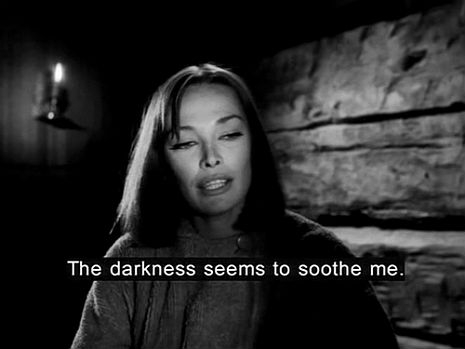The 1966 film Incubus is unique for being one of the few films to have been made in the international language.
What?
No, not love! WE’RE TALKING ABOUT ESPERANTO!
Esperanto is a language that was invented in 1887 by a Polish idealist who wrote under the name — I kid you not — Dr. Esperanto. The idea behind Esperanto was that it was a simple language that anyone could learn and, if the whole world learned to speak this one language, there would be far less misunderstandings, conflicts, and wars. There’s probably some truth to that idea and the language has gone through the occasional period of popularity. (If Lincoln Chafee runs for President again, I’m sure he’ll probably make learning Esperanto a part of his platform.) Still, Esperanto never really caught on. I imagine that most people were like, “But what if I go through the trouble to learn a new language but no one else does? Then I’d look stupid!” That’s what kept me from learning trigonometry.
Still, when director Leslie Stevens and producer Anthony Taylor was trying to decide what gimmick they could use to set Incubus apart from other low-budget horror films, they decided that the entire film would be in Esperanto. Since the film was about a succubus trying to steal soul of a “pure man,” the feeling was that Esperanto would give the film an otherworldly feel. The idea of having the demons all speaking Esperanto actually worked out well because, seriously, why wouldn’t otherworldly denizens have their own language? But of course, then William Shatner shows up as the pure man and he’s speaking Esperanto too. It gets a bit confusing.
The film takes place in the village of Nomen Tuum, where there’s a well that can both heal the sick and make the ugly look reasonably more appealing. As a result, the village has become a popular spot for not only those who are dying but also those who are incredibly vain. Kia (Alyson Ames) is one of the many succubi who hang out around the village, leading arrogant and foolish men into the ocean where their souls are claimed by the Incubus (played by Milos Milos). Kia, however, has grown bored with only tempting the morally corrupt. She wants a challenge! She wants to tempt someone pure of heart! All the other succubi tell her to be careful because dealing with the pure of heart might make it difficult for her to retain her demonic nature, which would upset the Incubus. Kia shrugs them off and heads out to seduce a clergyman….
Unfortunately, all the available clergymen turn out to be just as vain, greedy, and corrupt as the people drinking from the well! Whatever is a succubus to do!? Kia is on the verge of giving up when she spies a wounded soldier named Marc (William Shatner) and his sister, Arndis (Ann Atmar). They’ve come to the village to heal Marc of his wounds. And yes, they are “pure of heart.”
It would be easy (and, let’s be honest, a bit tempting) to glibly dismiss Incubus as being the film that proves that, in the 60s, William Shatner could overact even in Esperanto. And William Shatner does give a very Shatneresque performance. But Incubus is actually a surprisingly effective film. The film’s black-and-white cinematography was by Conrad Hall (with the uncredited assistance of William A. Fraker) and the film is full of wonderfully atmospheric images. When Marc dreams, he sees haunting images of dead men floating in the ocean. When the Incubus abducts Arndis, they travel through a shadowy landscape before finally arriving at a house that that appears to be on fire with demonic evil. As the film progresses, the imagery becomes more and more surreal, as if we’ve entered into a dream, a filmed nightmare of sorts. And, long before The Witch, Incubus features a character wrestling with a Satanic goat.
Incubus was filmed with the actors learning their lines phonetically and with no one on set to correct their pronunciations. When the film was previewed for 60 people who spoke Esperanto, the audience laughed at how the actors butchered their precious little international language. After that, Milos Milos — the actor who played the Incubus — was found dead with his girlfriend in what was assumed to be a murder/suicide, though many continue to claim that it was a murder/murder. (Milos’s girlfriend was also Mickey Rooney’s wife and both were discovered dead at Mickey’s house and, well …. I don’t like where this is heading. Sorry, Mick!) As a result of all of the scandal, no reputable U.S. distributor would handle Incubus. (This was 1966, after all.) So, the film was only released in France. Though I have no evidence to say for sure, I choose to believe that the French got it.
The film was long believed to be lost until the last remaining print was discovered in the collection of the Cinematheque Francaise in Paris. From that badly damaged print, Incubus was restored and, as a result, history’s first Esperanto horror film can once again be appreciated by audiences everywhere!
Mi amas feliĉan finon!



